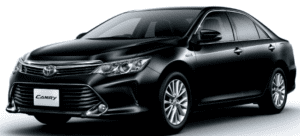Toyota Camry Hybrid workshop manual XV50 (2012-2017)

The Toyota Camry Hybrid from the 2012 to 2017 model years is part of the XV50 generation of the Camry Hybrid. During this period, the Camry Hybrid was known for its fuel efficiency, smooth hybrid powertrain, and a blend of comfort and practicality. Here are some key details about the Toyota Camry Hybrid from 2012 to 2017:
- Hybrid Powertrain:
- Engine and Transmission:
- The hybrid powertrain typically included a 2.5-liter four-cylinder gasoline engine combined with an electric motor. The transmission used was an electronically controlled continuously variable transmission (ECVT).
- Fuel Efficiency:
- Trim Levels:
- Interior Features:
- Safety Features:
- Standard safety features typically included antilock brakes, stability control, traction control, front-seat side airbags, full-length curtain-type airbags, and a driver’s knee airbag. Advanced safety features might be available on higher trim levels.
- Exterior Design:
- Battery System:
- Driving Modes:
- Updates and Changes:
- Practicality:
If you are considering purchasing a used Toyota Camry Hybrid from the 2012-2017 model years, it’s recommended to check the vehicle’s history, maintenance records, and overall condition. Specific features and options can vary by trim level and model year, so it’s advisable to review the specifications for the specific vehicle you are interested in.
Toyota Camry Hybrid workshop manual XV50 – 2012 Toyota Camry Hybrid Repair Manual PDF
The contents of a repair manual for the Toyota Camry Hybrid from the 2012 to 2017 model years would typically include a comprehensive set of information to guide technicians, mechanics, or DIY enthusiasts through maintenance, diagnostics, and repair procedures. While the specific content may vary depending on the publisher, here are common sections and topics you might find in a repair manual for the Toyota Camry Hybrid:
- Introduction:
- General information about the vehicle.
- VIN (Vehicle Identification Number) decoding information.
- Specifications and technical data.
- Maintenance:
- Scheduled maintenance intervals and procedures.
- Fluid capacities and specifications.
- Inspection and replacement procedures for essential components.
- Engine System:
- Engine specifications.
- Removal and installation procedures.
- Timing belt/chain replacement.
- Cooling system diagnostics and repair.
- Transmission and Drivetrain:
- Transmission specifications.
- Hybrid system overview.
- Inverter and battery system diagnostics and repair.
- Steering and Suspension:
- Steering and suspension system specifications.
- Strut and shock absorber replacement.
- Power steering system diagnostics and repair.
- Brake System:
- Brake system overview.
- Brake pad and rotor replacement.
- Brake caliper and master cylinder service.
- ABS (Anti-lock Braking System) diagnostics and repair.
- Body and Exterior:
- Body and frame specifications.
- Exterior lighting system.
- Door, window, and exterior panel removal and installation.
- Interior Components:
- Interior trim removal and installation.
- Dashboard and instrument panel components.
- Air conditioning and heating system diagnostics and repair.
- Electrical System:
- Electrical system overview.
- Wiring diagrams for various circuits.
- Battery, alternator, and starter diagnostics and replacement.
- Hybrid System:
- Hybrid system components and operation.
- High-voltage safety precautions.
- Inverter and battery system diagnostics and repair.
- Entertainment and Navigation System:
- Information about the audio and navigation systems.
- Troubleshooting and repair of entertainment components.
- Safety Features:
- Airbag system overview.
- Safety precautions and procedures.
- Troubleshooting and Diagnostics:
- Common issues and diagnostic procedures.
- Diagnostic trouble codes (DTCs) and their meanings.
- Index:
- An index to help locate specific information quickly.
- Technical Service Bulletins (TSBs):
- Information about known issues and recommended solutions provided by the manufacturer.
- Torque Specifications:
- Detailed torque specifications for various components.
Keep in mind that the specific content may vary between different repair manual publishers. Ensure that the manual you choose is designed for the exact make, model, and year of your Toyota Camry Hybrid. Always follow safety precautions and use the manual as a guide for appropriate vehicle maintenance and repair.

